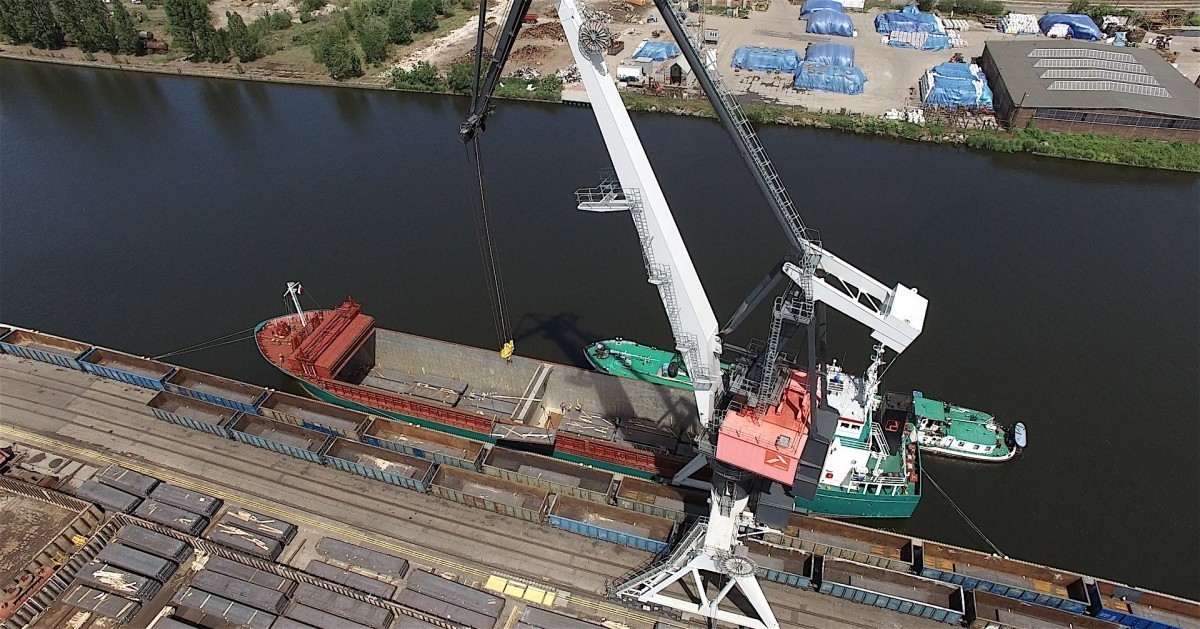
The Szczecin-Świnoujście Port Complex recorded exceptionally high cargo handling figures in 2017. Last year, the two ports handled nearly 25.5 million t of cargo. This translates into an increase of 5.4% comparing with 2016.
The leader with a double digit result is ore and fuels handling of which amounted to +59.4% and +46.7 respectively. On the one hand, the demand for ore from Polish Slovak and Czech steel mills accounts for excellent results in this cargo group. On the other, fuel handling increased mainly due to the operation of the LNG terminal in Świnoujście and larger import of crude oil from Russia, as well as export of upgraded oil to the west of Europe.
Other bulk did very well last year (+5.4%). The same applies to general cargo (+4.2%), including general cargo transported by ferries (+6.9%). Positive results were also noted by containers handling of which improved by 3% comparing with the previous year.
The drop in grain was a major surprise. The ports handled 28.6% less grain. It was the result of adverse weather and rainy summer of last year. Unfortunately, last year, the downward trend continued in the handling of coal. The results this year was 27% less than in 2016.
In total the two ports handled 25,423.6 thou. t of cargo, namely 1,310.6 thou. t more than in 2016. This translated to an increase by 5.4%.
The Ports Authority foresees that the upward trend should continue through 2018 to reach 26 million t of cargo handled at the year end. We should remember, however, that the market has its whims and some negative factors, beyond the control of the Authority and loading companies, may appear and affect cargo volumes handled.
It is worth adding that the Ports Authority and port companies have been making effort to attract new cargo. Those include investment in the port infrastructure. According to their 2014-2020 investment plan, the Seaports Authority intends to spend nearly PLN1.5 billion. The Authority is going to modernise quays in Szczecin near the Dębicki Canal and the Kaszubski Basin. Technical parameters of quays will be aligned with the new depth of the Świnoujście-Szczecin fairway of 12.5 m. Both ports will extend and modernise their infrastructure. Świnoujście will extend the ferry terminal to make it suitable for intermodal transport, whereas a new redistribution facility will be built in the LNG terminal. The port of Świnoujście is going to build a new deep sea quay.
It is worth adding that in the nearest future, the investment in the two ports will improve the access infrastructure by dredging and modernising the Świnoujście-Szczecin fairway to reach the depth of 12.5 m, and S3 extension and improving navigation conditions on the Oder Waterway.
All the activities re expected to enhance competitiveness of the Szczecin and Świnoujście seaports. This should translate into a growing volume of cargo handled every year.
Today, Szczecin and Świnoujście comprise a universal port complex with general cargo accounting for 51%, dry bulk 36%, whereas liquid bulk 13%. Additionally, the Świnoujście ferry terminal it the leader of ferry services on the South Baltic Sea. At the moment, 12 ferries operate to Sweden. Almost every day, nearly 11 cruises are made between ports of Trelleborg and Ystad.


